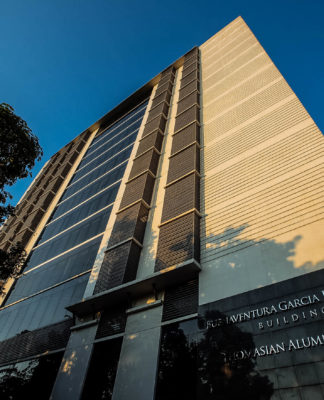A CHARCOAL that enlivens the soil and reduces carbon emissions has finally reached the country’s farmlands.
Agricultural wastes can now be converted into charcoal which can serve as an excellent organic fertilizer while capturing carbon molecules and other greenhouse gases (GHGs) trapped in the atmosphere. Thus said agriculturists during the first Philippine National Biochar Conference held at the Philippine Social Science Center in Diliman, Quezon City last April 17.
With the theme, “Towards Rice Self-Sufficiency, Food Security, and Climate Change Mitigation and Adaptation,” experts discussed possible solutions to impending threats in food security and climate change. Raising the awareness of Filipino farmers about biochar, a charcoal obtained from the remains of dead organisms or biomass, was also one of the goals of the conference.
Modern-day scientists have adopted biochar from Amazonians, who pioneered the cultivation of infertile lands of terra preta in the Amazon basin thousands of years ago.
Philip Camara, director and chairman of the governance committee of Subic Bay Metropolitan Authority, explained that biochar is produced through pyrolysis or incomplete combustion, a process where high amount of heat with very limited oxygen is applied to a biomass.
Consequently, the process produces a pure carbon biochar, bio-oil and syngas which are good sources of renewable biofuels.
While the process of producing biochar is similar to that of charcoal, Camara noted that biochar is made to regenerate the soil and to capture carbon molecules that may possibly degrade to GHGs, while an ordinary charcoal is usually more for cooking. The secret behind biochar’s ability to give life to the soil lies on its “carbonic structure.”
“One gram of biochar shows millions and billions of micropores that provide a huge surface area where microbes, fungi and protobacteria can live,” he said. “These organisms help enliven the soil and provide nourishment to the plants as they take nitrogen from the air and convert it to nitrogen that the plant can use.”
Nitrogen is an important compound in the formation of amino acids and proteins needed by plants.
In addition, biochar is proven to be an excellent carrier of biofertilizers containing microorganisms, which increase the nutrient supply in plants through nitrogen fixation.
“We used the biochar produced in Ecosystems Research and Development Bureau (ERDB) as a packing medium for the reforestation of lipote species (Syzygium polycephalum) in Mt. Malarayat Forest Reserve [in Batangas],” said Portia Lapitan, officer in charge and director of ERDB of the Department of Environment and Natural Resources.
Aside from the biological factors, Philippine Biochar Association (PBiA) Director Bernardo Tadeo also emphasized the importance of various microelements in biochar which are necessary in plants’ growth.
“Some farmers no longer buy micronutrients [for their crops] because when agricultural wastes like rice hulls are turned into biochar, microelements like phosphorus, potassium, sodium, calcium, iron, zinc, manganese, and copper are also produced,” said Tadeo, who is also a senior consultant of the Philippine Rice Research Institute.
He added that biochar formed from rice hulls is a good soil conditioner because it is a good water absorbent, allowing water retention needed by the soil.
Improving the soil quality in the farmlands is crucial in food security and self-sufficiency in rice production, especially now that the country sits fourth on the list of vulnerable countries due to the effects of climate change, as reported in the United Nations Global Climate Risk Index of 2013.
Moreover, PBiA states that environmental conditions like storm and phenomena such as El Niño and La Niña brought by climate change will gravely affect agricultural production in the country.
As the demand for rice is expected to grow, especially as it takes 650 million tons of rice to feed 3 billion people, International Rice Research Institute (IRRI) scientist Keiichi Hayashi said the country has to increase the rice production in order to achieve food security.
“The target is to produce eight million tons of rice in the next 10 years. In order to improve productivity, expansion of existing land intensification, reduction of agricultural wastes and improvement of production efficiency should be done,” Hayashi said.
Converting to a better form
Aside from the advantages of using biochar in the agricultural sector, its application also has an impact on problems resulting from climate change.
According to Camara, the ideal level of carbon dioxide concentration in the atmosphere is between 280 to 350 parts per million (ppm). However, the present level of carbon emissions is already 12 percent higher than the ideal carbon concentration, and higher emissions worsen global warming.
“The total agricultural production around the world is about nine billion tons, five billion of which is consumed by the people while the remaining four billion remains as agricultural wastes. But, if you take this large volume of wastes and converting it into biochar, atmospheric carbon dioxide will be reduced by 3.5 ppm,” Camara said.
In addition, biochar captures biomass emissions like carbon and methane which are naturally degraded to GHGs, and further prevents accumulation of GHG in the atmosphere.
Meanwhile, ERDB made a machinery that not only converts agricultural wastes into high quality biochar, but also gaseous emissions into usable agricultural products, a potential step in climate change adaptation and mitigation.
“The smoke emitted by waste materials [which usually contain nitrogen and sulfur] during biochar production is captured by the machinery so it goes back into its liquid form which can eventually be used as liquid fertilizer, flower bloomer, and even insect repellent,” Lapitan said, adding that biodegradable solid wastes can also be integrated into production to make charcoal briquettes.
A charcoal briquette is a renewable biofuel produced from waste materials like dead plants and animal dung, which makes it a good alternative to wood, liquefied petroleum gas, and charcoal for heat energy unlike fossil fuels.
“If we can produce 300 kilograms of it per day, the net present value of that is worth 2 million pesos. By producing biochar, we reduce environmental problems while earning income for the country out of abandoned biological materials,” Lapitan said.
















